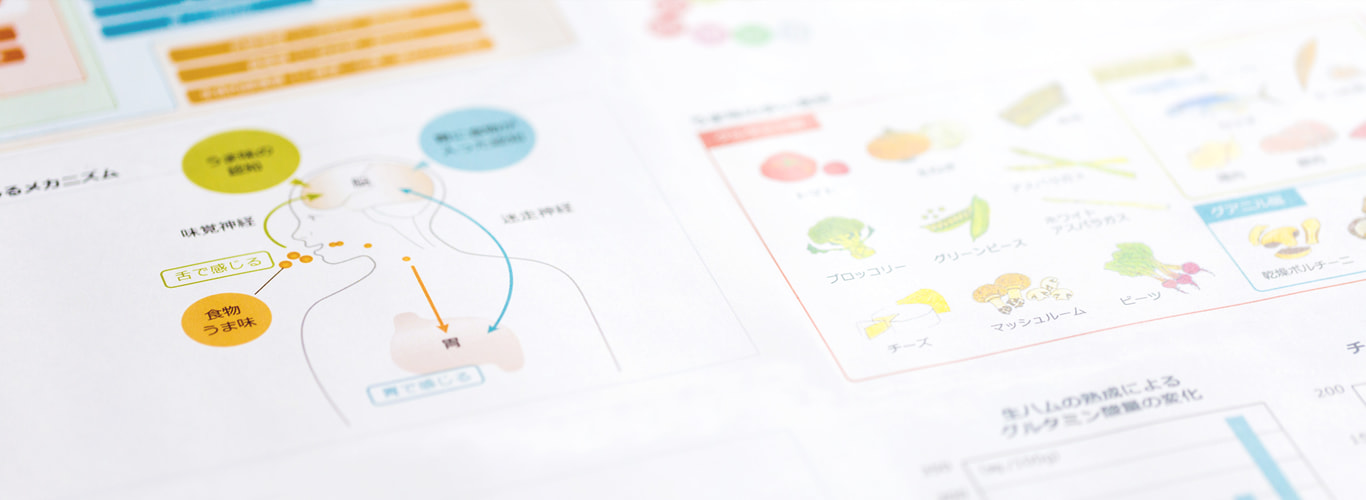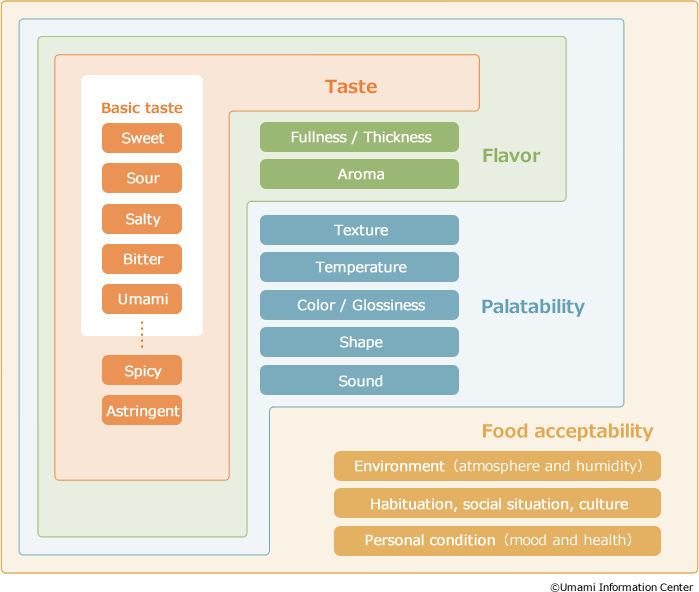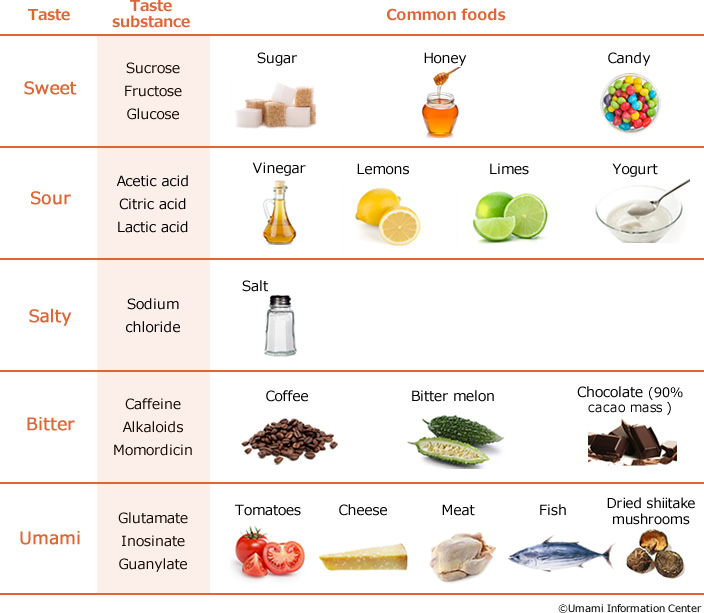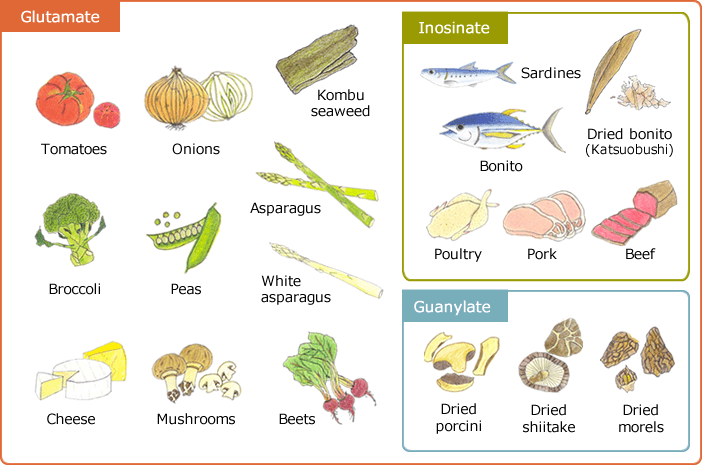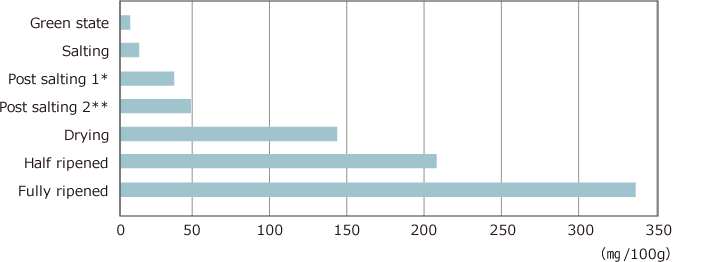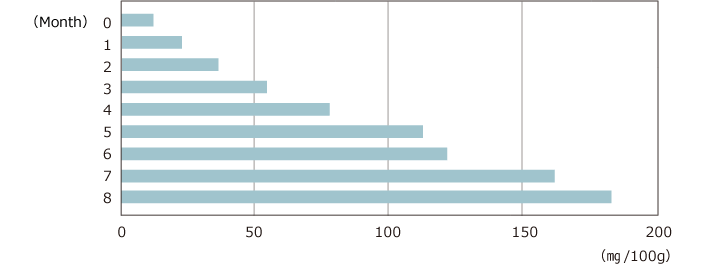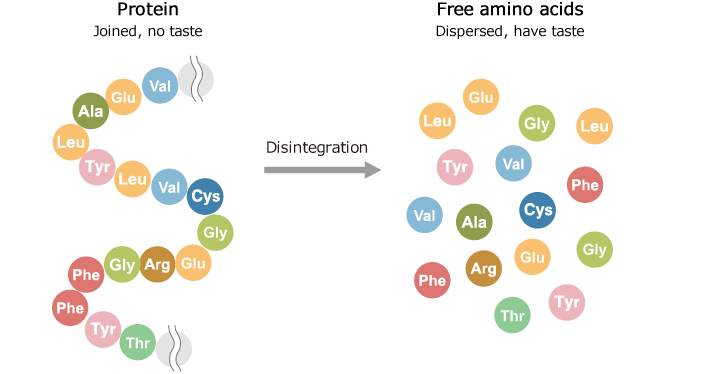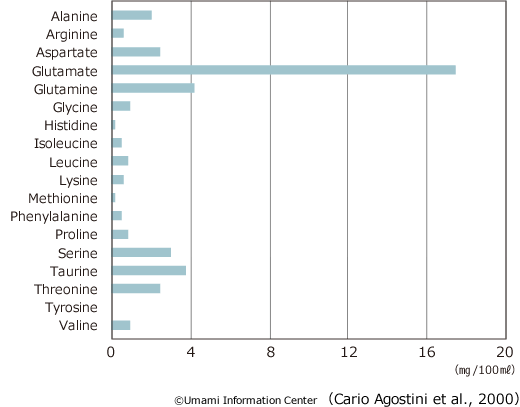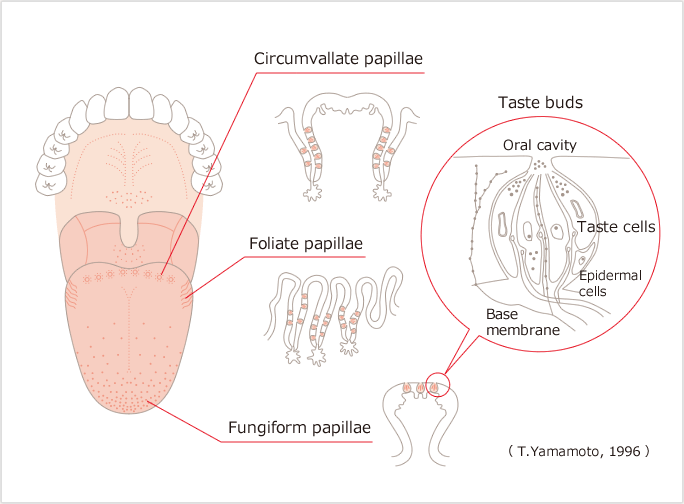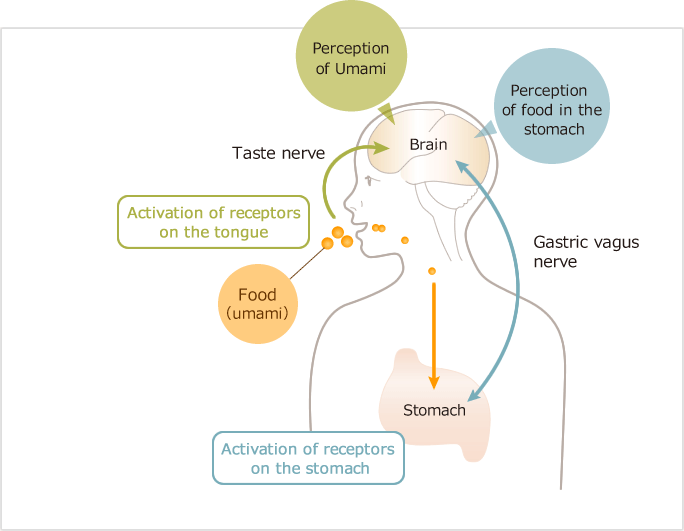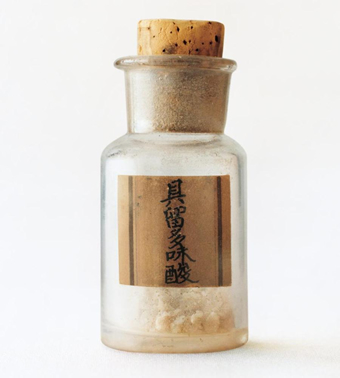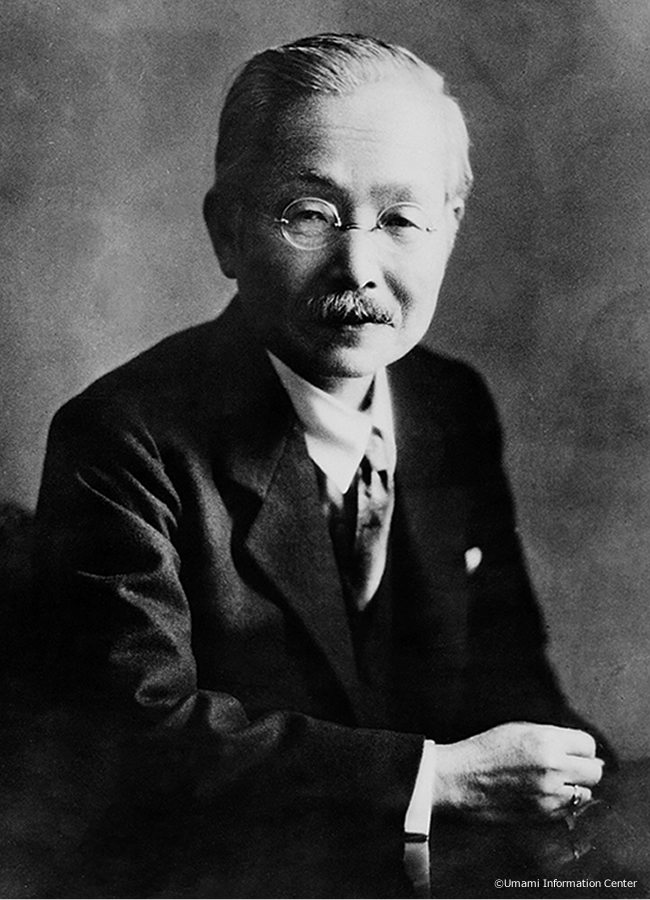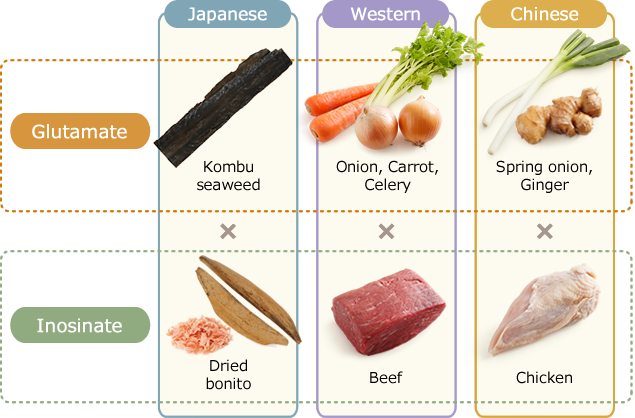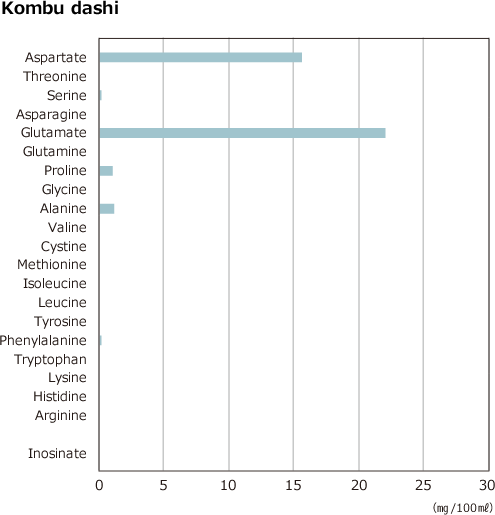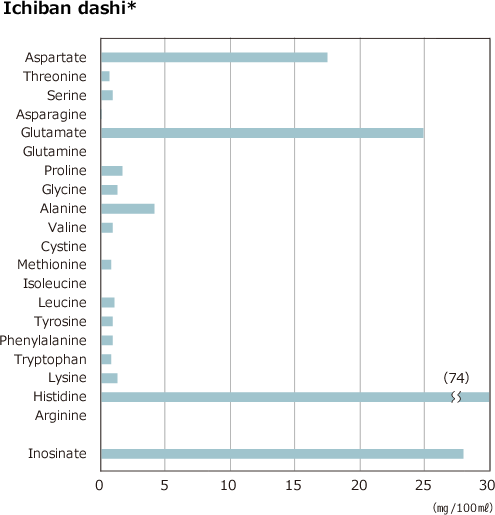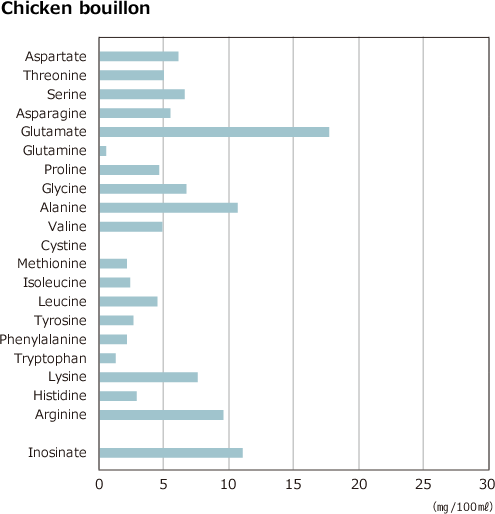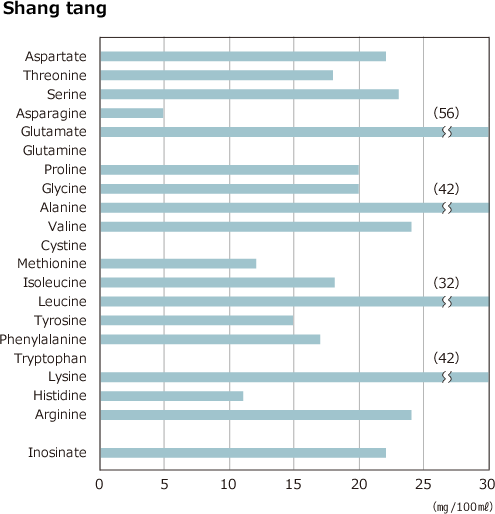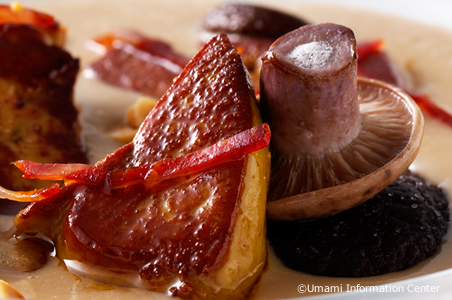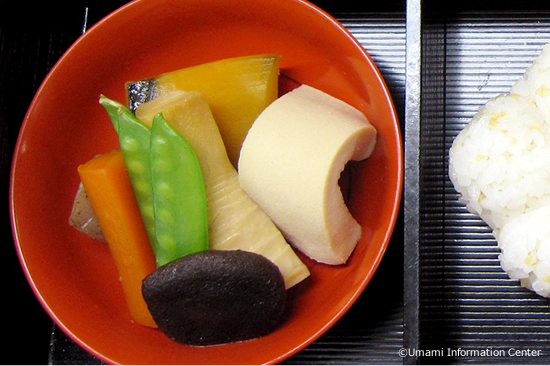Meat generally undergoes a certain period of aging prior to being sent to the market. The main component of meat is protein, which is made up of a long chain of 20 amino acids. Glutamate constitutes the
largest proportion of these amino acids, around 15 percent.
Protein itself has no taste. Taste is only perceived when protein breaks down and the amino acid chain disintegrates. These scattered amino acids are known as free amino acids, and are usually referred
in this pamphlet as amino acids. This is why instead of “free glutamate,” we simply use “glutamate.” As well as the likes of free glutamate and free aspartate containing umami, free amino acids can
impart a sweet taste (from glycine or alanine) and bitterness (from leucine or valine).
The flavor peculiar to meat emerges when the protein in the meat breaks down during the aging process, and the umami-carrying free glutamate increases.
A similar phenomenon occurs in foods such as cheese, cured ham, miso and soy sauce. In the case of cured ham a leg of pork is salted, allowed to develop mold, dried and carefully aged. During
this process the volume of glutamate is boosted by around a factor of fifty. In cheese, the longer the aging process, the higher the glutamate.

